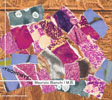 His story is somewhat legendary in the noise/power electronics scene: recording as MB, Bianchi put out a slew of albums in the early 1980s that helped to define the genre during its nascent days. Then, in the middle of the decade, he left music for personal reasons (rumoredly he became a Jehovah’s Witness). He reappeared in the latter part of the 1990s, with work I had been told (either directly or via a place like alt.noise) resembled a more avant garde Yanni. Needless to say I avoided it. Once this album was available, something told me to check it out and, while not in the same league as his early work, it channels enough of it to still be an interesting listen.
His story is somewhat legendary in the noise/power electronics scene: recording as MB, Bianchi put out a slew of albums in the early 1980s that helped to define the genre during its nascent days. Then, in the middle of the decade, he left music for personal reasons (rumoredly he became a Jehovah’s Witness). He reappeared in the latter part of the 1990s, with work I had been told (either directly or via a place like alt.noise) resembled a more avant garde Yanni. Needless to say I avoided it. Once this album was available, something told me to check it out and, while not in the same league as his early work, it channels enough of it to still be an interesting listen.
Early MB albums such as Aktivitat and Symphony for a Genocide are ranked as high water marks in the early industrial, noise, and power electronics genres, and for good reason. While his early sound was intentionally mired in a lo-fi analog murkiness, it worked. While contemporaries such as SPK and Whitehouse were using their work to push the boundaries of volume and extremity, MB was far more restrained and dour, but in a way that worked. It was very depressive and dark, but never falling into clichéd territory.
The first two tracks on here really had my hopes lowered for this being an album worthy of being filed next to the two ArcheoMB box sets on my shelf. "Ortni" is reverb battered drone, with deep tremoloed scrapes, almost strings-like, met with some rudimentary layering and variation. "The Inflammatory Sesor" follows a similar pattern, switching the strings for church organ like textures that are a bit more compelling, but the texture is also just a bit too bland. While it wasn’t along the lines of Yanni, I was feeling this like a rejected Cold Meat Industries demo tape circa 1996.
Once "Oigada" hit its stride, a bit of the old Bianchi began to shine through. The overtly flanged rudimentary rhythms and complex layering, matched with sci-fi like beeps and tones in the background channeled that old school industrial style he was pioneering some 25-plus years ago. The best part is, it never sounds like an imitator, it just sounds like MB, even without the protection of analog fuzziness.
"Ogral" pushes deep mournful tones into slow reverb, which swells in volume to reach a stride that is purely harsh electronic noise, but done sparingly as to not become too contrived. "Evarg" sounds as if it’s based upon decaying tape recordings of symphonic music, all leaning into the higher frequency end of the spectrum. Like the track before, it isn’t shy about pushing into grinding harsh noise territory, but never excessively so.
The closing "The Plain Elanif" is a fitting coda for the album: music-tinged tones swirl up to the surface, but are kept in an industrial swamp. Perhaps this is where the “converted” MB shows up: while the music is superficially just as bleak and depressive as the best of his early work, there’s an underline sense of hope and positivity that shines through. Never annoying or new-agey, it just feels like a stream of light piercing through the otherwise hopeless track. It is a pleasant conclusion for a surprise of an album.
After the first two pieces on here, I thought my instinct was wrong in seeking this disc out. It wasn’t John Tesh goes isolationist, but it was just too overwrought. Once it hits its stride though, the album does demonstrate its pedigree and shows that, regardless of his personal life, MB still can compose an appropriately dour industrial symphony worthy of his past discography.
samples:
Read More

